Every few years a new technique comes along that changes the way we fish on the West Coast. Interestingly however, many of these “new”
technique are really not new. They have been fished all over the world for years, but we, at times, have been slow to adopt
them. While some of our angling cadre may be eager to try new things, others are stuck in their old, traditional ways.
The ones on the cutting edge of new techniques are the ones who ride the wave of awe (or jealousy) for their stunning posts on Instagram and Facebook. For those on the envious side of the harbor, the posts are made worse when you’re sporting catches made the same time you
were out. It’s frustrating when you just can’t figure out what those guys are doing. Clearly, you can’t sit on your past successes. If you don’t want to be victimized by the kings of social media, you’re going to need an arsenal of methods when you head to the bluefin grounds.
The World Is Your Tackle Box In my years of testing many of the world’s fisheries, I have been exposed to some interesting techniques. Yet, it’s what you do with the techniques you learn that really matters. One of those would be utilizing downriggers for trolling live baits when
big tuna are deep and won’t come up to eat. I encountered this technique in Puerto Vallarta in the early 2000’s. When the big bluefin showed but wouldn’t bite, we got them on the downrigger.
As a consequence, my first cow here in July 2016 came on a slow-trolled sardine on the downrigger. A year earlier there were many days we were back to the dock early with nice bluefin when others struggled. Getting that bait down and in the precise zone was the secret. Other examples include the use of ballyhoo in North Carolina for bluefin while another was fishing skip baits for giant black marlin in Australia. I took these two trolling styles and started fishing ballyhoo read the full article

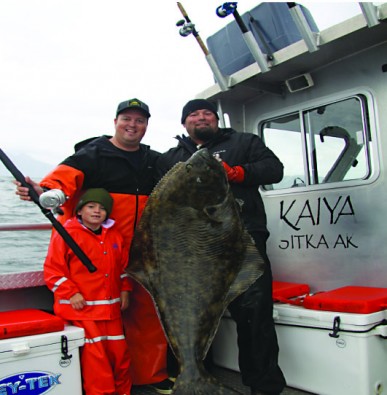 Sitka has been a destination that holds a special place in my heart since the first moment I laid eyes on it. I can remember my first landing at the airport, where the Pacific Ocean engulfs both sides of the landing strip. Of course, the fact that it has some of the world’s best salmon and halibut fishing doesn’t hurt either.
Sitka has been a destination that holds a special place in my heart since the first moment I laid eyes on it. I can remember my first landing at the airport, where the Pacific Ocean engulfs both sides of the landing strip. Of course, the fact that it has some of the world’s best salmon and halibut fishing doesn’t hurt either.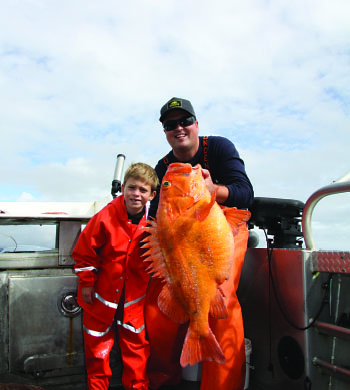 The wildlife viewing is as good as it gets. While running out to the fishing grounds we ran across whales, sea lions, bald eagles, puffins, otters, deer and there were even bears roaming the shoreline. Sitka surely has what I would call the true Alaskan experience.
The wildlife viewing is as good as it gets. While running out to the fishing grounds we ran across whales, sea lions, bald eagles, puffins, otters, deer and there were even bears roaming the shoreline. Sitka surely has what I would call the true Alaskan experience.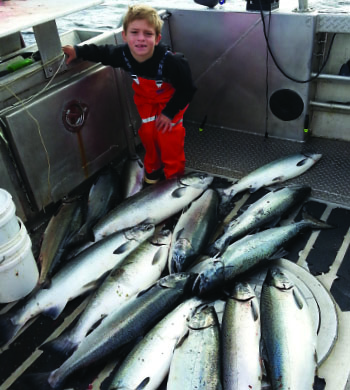 The Kingfisher Lodge is nicely appointed with clean and spacious rooms and we even had a hot tub on our patio. This came in handy after a day of pulling on fish. The food was outstanding and there were no shortages of it, plus variety enough for even the picky eater.
The Kingfisher Lodge is nicely appointed with clean and spacious rooms and we even had a hot tub on our patio. This came in handy after a day of pulling on fish. The food was outstanding and there were no shortages of it, plus variety enough for even the picky eater.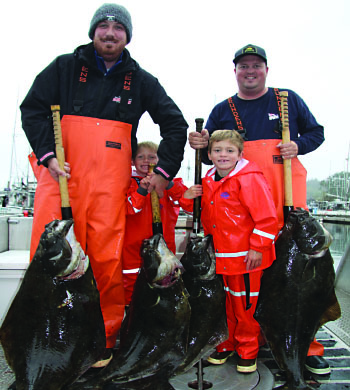 The shear speed of these coho is amazing. They strike hard and run hard with some jumps in between. The bite was good, but we heard from some guys up around the cape that the weather wasn’t too bad and the bite was good there as well. Before we took off, we gave a quick rockfish drop and both boys doubled over with nice lingcod on the light rods.
The shear speed of these coho is amazing. They strike hard and run hard with some jumps in between. The bite was good, but we heard from some guys up around the cape that the weather wasn’t too bad and the bite was good there as well. Before we took off, we gave a quick rockfish drop and both boys doubled over with nice lingcod on the light rods.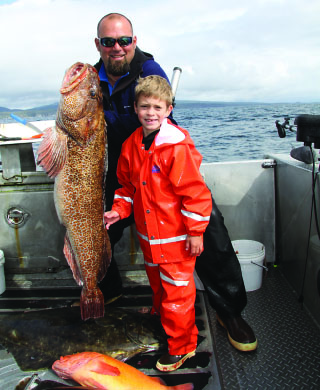
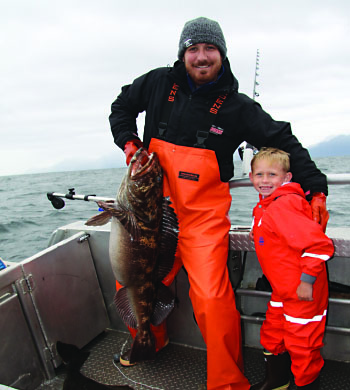 Neither the dads nor the boys were ready to head home at the end of our stay. The fishing and company had been great and the scenery unmatched. I will be back to Sitka real soon; this is a destination that will always be on my travel list.
Neither the dads nor the boys were ready to head home at the end of our stay. The fishing and company had been great and the scenery unmatched. I will be back to Sitka real soon; this is a destination that will always be on my travel list.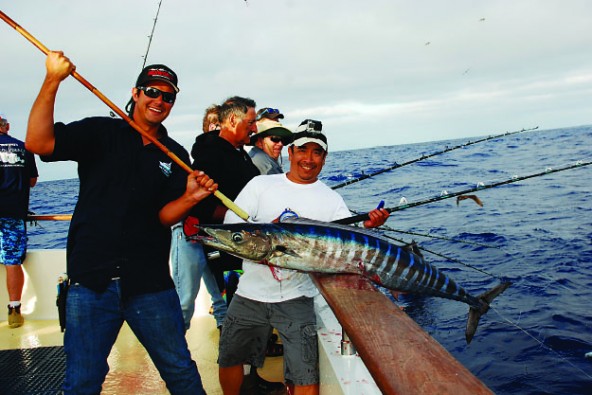 A possible to top the fishability, crew, sea worthiness and meals of that served up aboard the 116-foot Intrepid.
A possible to top the fishability, crew, sea worthiness and meals of that served up aboard the 116-foot Intrepid.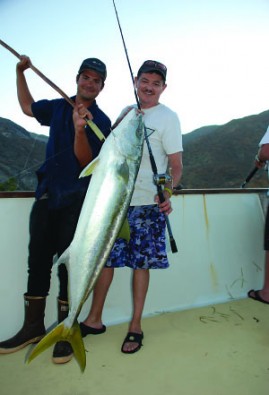 Captain Kevin Osborne pulled away from the docks and it was off to the bait receivers, where the deck crew selected enough cured sardines that would hopefully carry us through the entire trip. It took nearly 1.5 hours to load the bait, first into the huge on deck bait tanks and the remainder of hot sardines were placed down into two slammers.
Captain Kevin Osborne pulled away from the docks and it was off to the bait receivers, where the deck crew selected enough cured sardines that would hopefully carry us through the entire trip. It took nearly 1.5 hours to load the bait, first into the huge on deck bait tanks and the remainder of hot sardines were placed down into two slammers.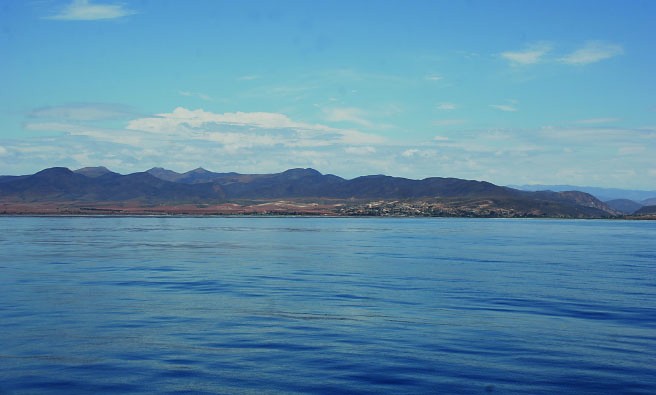
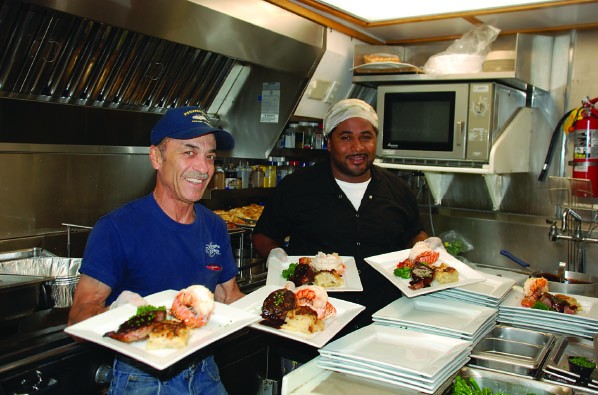 That next morning’s bite was explosive from the start, with yellows in the 18- to 25-pound class coming over the rail for hours. The activity and blood in the water attracted brown sharks and they took their toll of yellows, usually just as an angler would call for a gaff. Unfortunately, many yellows were lost to sharks, but the bite still continued strong throughout the day with most every angler asking for additional numbered fish tags. You just could not make a cast and not hook into a yellowtail, but many were lost in the kelp.
That next morning’s bite was explosive from the start, with yellows in the 18- to 25-pound class coming over the rail for hours. The activity and blood in the water attracted brown sharks and they took their toll of yellows, usually just as an angler would call for a gaff. Unfortunately, many yellows were lost to sharks, but the bite still continued strong throughout the day with most every angler asking for additional numbered fish tags. You just could not make a cast and not hook into a yellowtail, but many were lost in the kelp.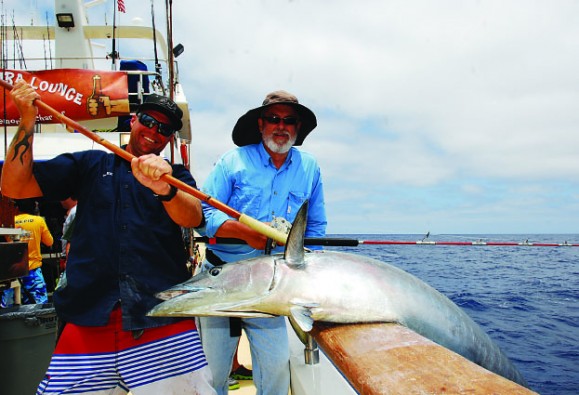
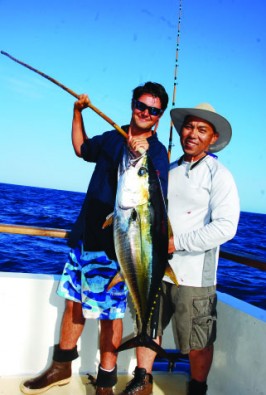 Added Osborne over the PA system, “Guys, we will start off our trolling rotation now. Those standing by should wait until I get the boat in position to make a cast with a ‘bomb,’ iron or live bait. You don’t want to cast over a hooked trolled wahoo, and you also want to cast to the side of the boat where I last see them on the side-scanning sonar.”
Added Osborne over the PA system, “Guys, we will start off our trolling rotation now. Those standing by should wait until I get the boat in position to make a cast with a ‘bomb,’ iron or live bait. You don’t want to cast over a hooked trolled wahoo, and you also want to cast to the side of the boat where I last see them on the side-scanning sonar.”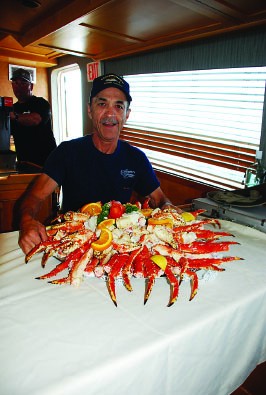 After couple of unsuccessful drifts, the Intrepid moved in closer to the island that allowed anglers on the bow to cast surface iron Tady jigs toward shore. Seals lurked in the chumline but stayed away from the bow section, which allowed a few lucky anglers to hook into huge mossbacks and land them. While only a few big yellows in the 40- to 45-pound class were landed, it sure made for an exciting late afternoon of angling as the sun set behind the rugged mountains of Isla Cedros. Topping off on the drift was a 45-pound white seabass that drew the attention of all on board.
After couple of unsuccessful drifts, the Intrepid moved in closer to the island that allowed anglers on the bow to cast surface iron Tady jigs toward shore. Seals lurked in the chumline but stayed away from the bow section, which allowed a few lucky anglers to hook into huge mossbacks and land them. While only a few big yellows in the 40- to 45-pound class were landed, it sure made for an exciting late afternoon of angling as the sun set behind the rugged mountains of Isla Cedros. Topping off on the drift was a 45-pound white seabass that drew the attention of all on board.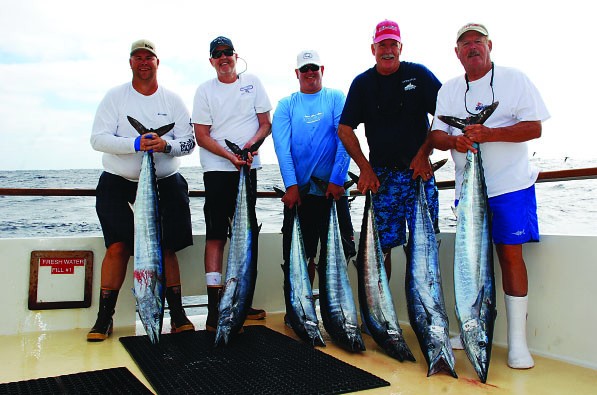 With calm seas and little wind in place, the hurricane moving off to the west, conditions were ideal for a good shot at yellowfin. Trolling rotations were again put in place with a selection of Marauders, cedar plugs and feathers jigs deployed across the stern. It didn’t take long for the first tuna to jump on the cedar plug with a few bait fish to follow. The captain then began to box the area and we were soon joined by three other Cadillac sportboats in these tuna-rich waters. After a few more stops with increased numbers of 18- to 25-pound tuna being put down in the slammer, the ocean exploded with foaming tuna off the stern corner that followed a quadruple jig stop.
With calm seas and little wind in place, the hurricane moving off to the west, conditions were ideal for a good shot at yellowfin. Trolling rotations were again put in place with a selection of Marauders, cedar plugs and feathers jigs deployed across the stern. It didn’t take long for the first tuna to jump on the cedar plug with a few bait fish to follow. The captain then began to box the area and we were soon joined by three other Cadillac sportboats in these tuna-rich waters. After a few more stops with increased numbers of 18- to 25-pound tuna being put down in the slammer, the ocean exploded with foaming tuna off the stern corner that followed a quadruple jig stop.

